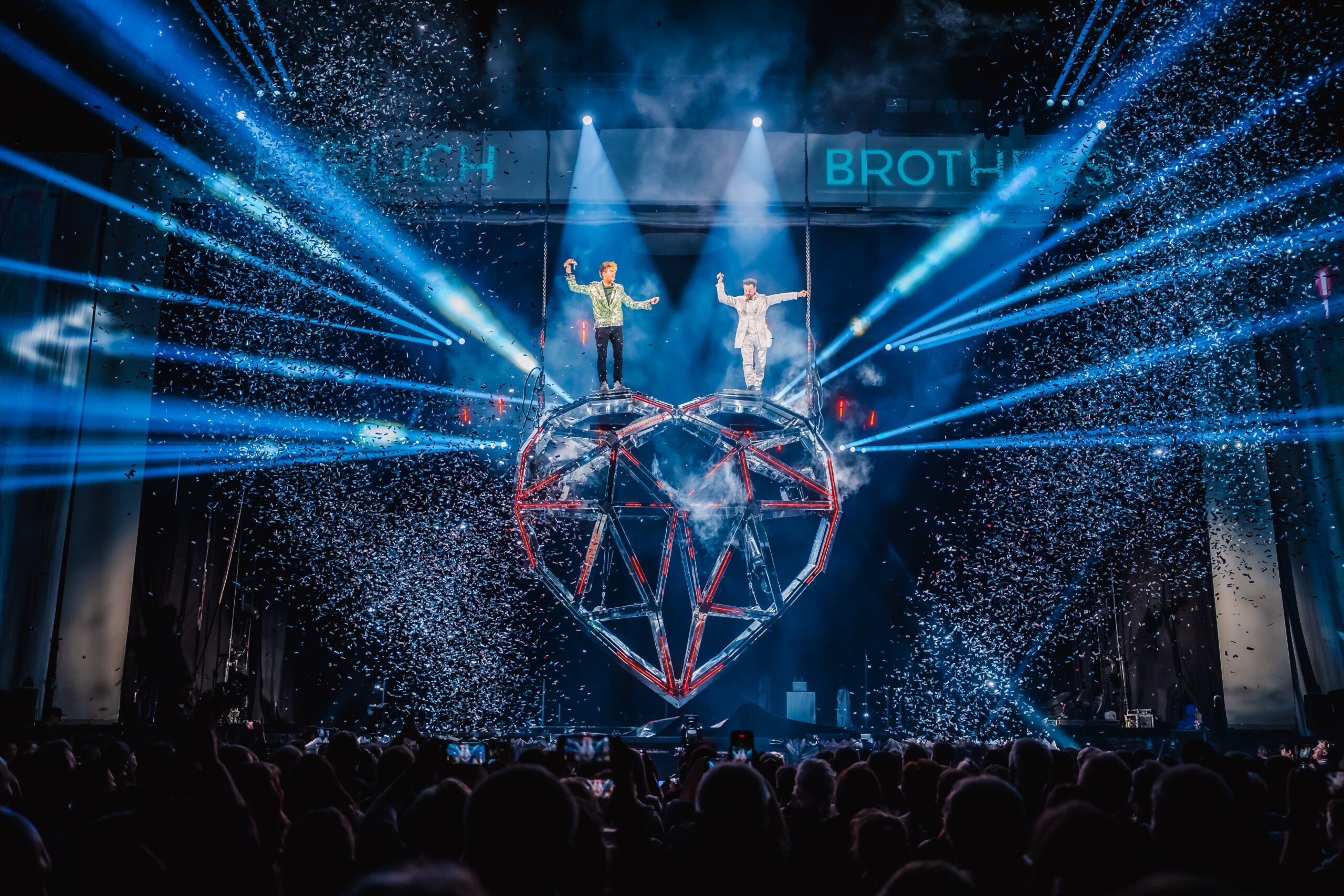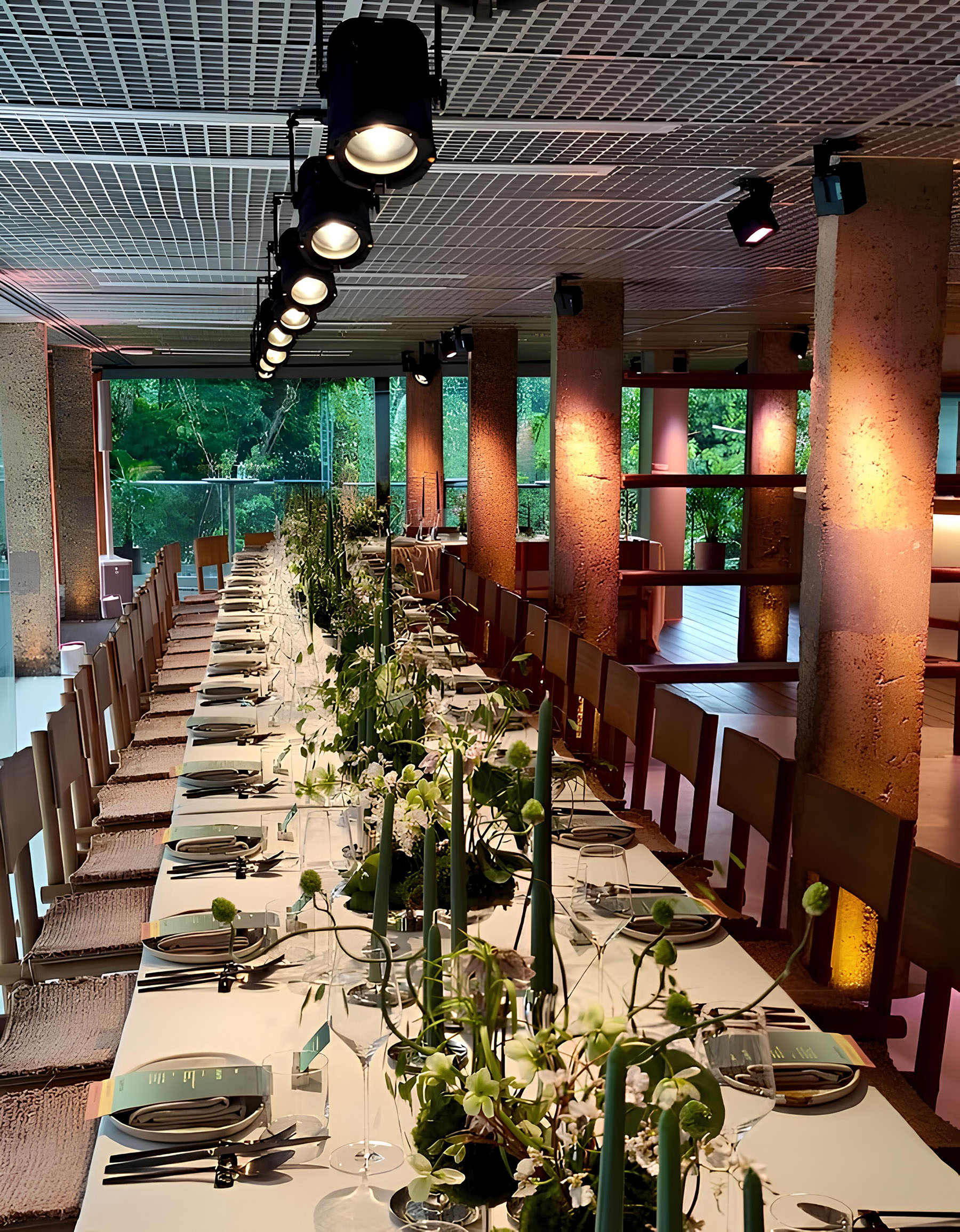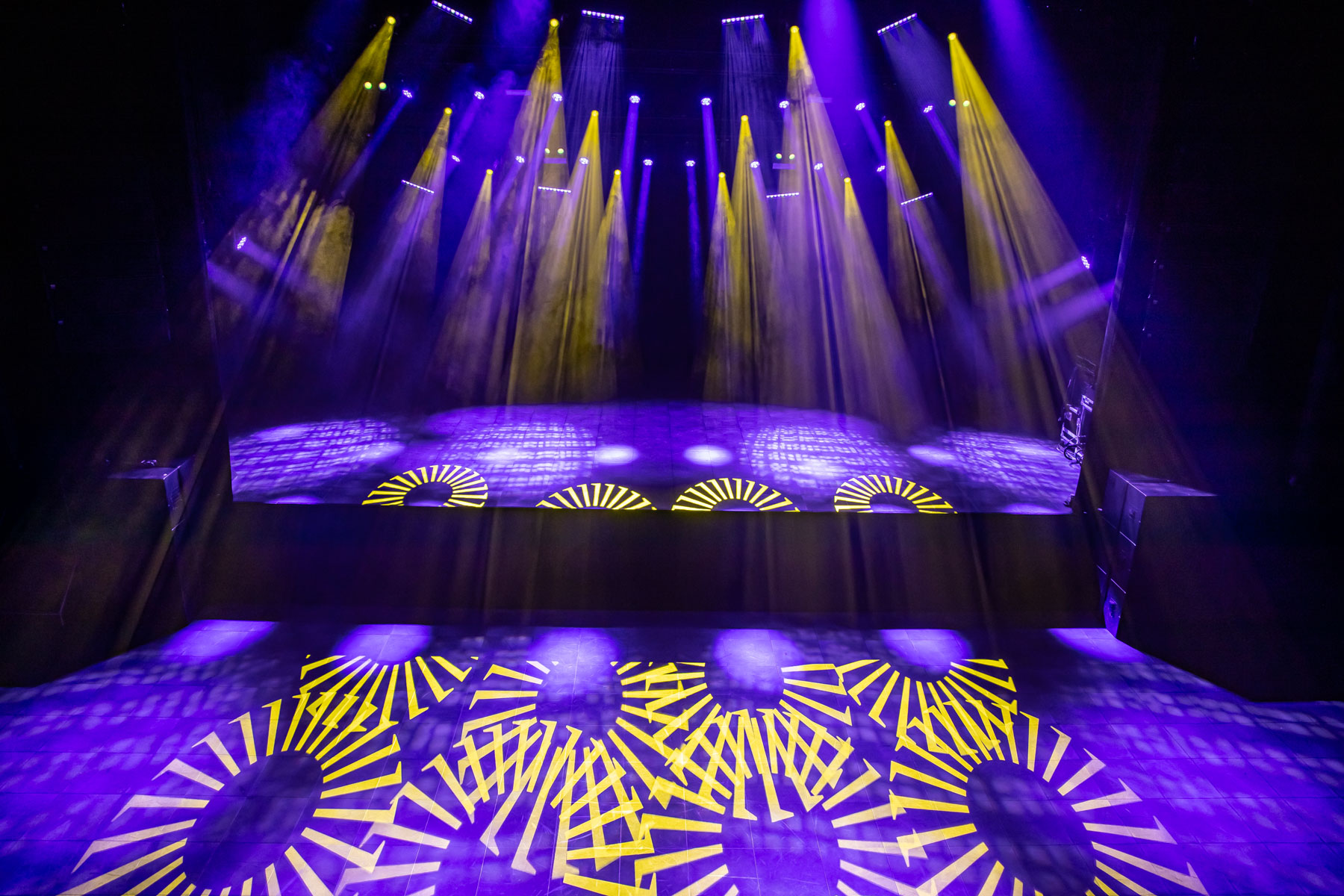LONDON – SGM reports that 68 of its two-meter-long LT-200 tubes, most typically giving optic synapses a jolt from dance floor ceilings around the world, are being used by designer Bob Crowley as a key visual element in a new Tom Stoppard play, The Hard Problem, at the Dorfman Theatre, part of the National Theatre on London’s South Bank. The color-changing tubes are assembled in a light sculpture fashioned to represent flashes of cerebral activity within a larger-than-life brain as the characters wrestle with the “hard problem” – the nature of consciousness and how it is linked to the physical brain.
More details from SGM (www.sgmlight.com):
It was a YouTube video of a spinning cube that first set Crowley’s creative juices flowing, and faced with the task of emulating this effect in order to represent brain pulses, the Theatre’s lighting operations manager, Marc Williams and control supervisor, Daniel Murfin tracked down SGM’s 3D pixel tubes after visiting the PLASA Show, and seeing them displayed on the website of Madrix LED software, the system which they use to control it.
Hired from SGM customer, Blueprint Events, the LT-200 tubes are brought to life by a collaborative team which also includes lighting designer Mark Henderson, lighting programmer Kate Greaves and lighting supervisor, Paul Knott — who was also instrumental in programming the effect.
The ‘brain’ graph itself is divided by 20 ‘nodes’ which are made up of SGM’s tiny LD-5 LED Light Domes — supplied by SGM UK.
Stated Marc Williams, “This is the first time we have used the pixel tubes — and it gives us the 3D effect we wanted. We needed a reliable plug and play system and the LT-200 is all self-addressing.”
But so eye-catching is the effect that the production team can only use it for around 30 second bursts during the 10 or 11 scene changes for fear of it interfering with the main thrust of the complex abstract play, which deals with the serious subject of consciousness and evolutionary biology.
The lighting therefore had to be sensitive to this, as Williams explains. “The [brain sculpture] is controlled in two ways — as a series of LD-5 nodes, and as pixel-mapped LEDs which we use as synapses to represent abstract ‘thoughts’ firing across the brain; this represents the content of the preceding scene.”
He said that due to the challenging concepts, director Nicholas Hytner had been “absolutely specific” with his requirements, which resulted in Daniel Murfin creating mostly bespoke content to achieve a wide range of graphic representations — playing 2D video files through the display. All content was made in sync with the music which is MIDI triggered.
“I have taken it right back to 2-3%, using vertical transitions — making it very ‘ripply’, in a way that has not been used in theatre before,” said Murfin. “You can read images better at a low intensity.
 “By using mapping techniques we can create lots of different layers with underlying colours and pass lo-res video through it, which with a pitch of just 227 pixels across is virtually nothing!”
“By using mapping techniques we can create lots of different layers with underlying colours and pass lo-res video through it, which with a pitch of just 227 pixels across is virtually nothing!”
All the nodes and synapses are triggered from an ETC Eos lighting desk piloted by Kate Greaves, which in turn triggers the Madrix effects generator, while the video itself is programmed in Catalyst.
In summary Marc Williams says, “The sculpture is proving to be a real conversation piece, there’s been a real buzz about it.” He adds that Nicholas Hytner is said to be extremely happy with the effect. “He feels the audience really gets it!”
Mark Henderson adds his own endorsement. “The effect works really well, and produces a nice combination. The lighting team had done a lot of research — and there is nothing else like this 3D effect on the market.”
But the final word comes from Ian Kirby. “This imaginative installation proves that the tube concept has applications way beyond light entertainment and we are already talking to customers in the public sector who are waking up to the creative way that these can be used architecturally.”



